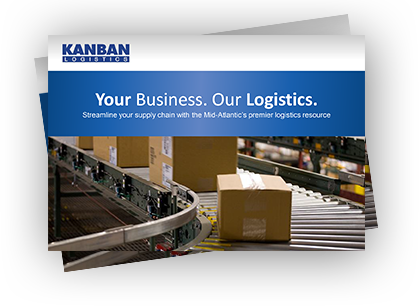Manufacturers are focused mainly on factory output. How they can make more stuff at the same or lower cost.
To improve output, the focus is on things like automation, worker productivity, and process improvement. Not nearly enough focus is placed on factory inputs – the movement of raw materials and parts into the factory – and how these inputs are managed to improve factory throughput and financial performance.
Here are four ways that a focus on factory inputs can positively impact factory output.
1 - Store raw materials off-site to free up space, increase factory output
How much of your existing plant floor space is being taken up by raw materials, packaging and trash? If you’re not sure, do the math. The percentage might surprise you. If you were to cut the percentage by 50% or 75%, how much space would that free up to expand manufacturing activity?
To reclaim this lost space, use the services of a local third party logistics (3PL) warehouse to store and manage your materials. Outside warehouse space and labor costs are typically much lower than a manufacturing environment. If your inventory planning processes are sound, you can receive materials just in time, so they enter your building and go straight to the line for processing. Read this case study for an example of an aerospace company that does this.
Companies like Kanban Logistics specialize in operating inbound logistics warehouses to improve factory output in Eastern North Carolina – home to many food, aerospace, auto and other advanced manufacturing operations. Not only will your throughput increase, but you’ll extend the life of your existing facility and avoid the significant cost of expansion or moving to a new site. That typically makes CFOs very happy.
2 - Start the manufacturing process outside your plant
Many inbound logistics tasks don’t require the skill and pay level of your assembly workers. Yet you may be paying these high-cost associates to open boxes, throw away trash and count parts. These tasks, and others, can be performed faster and for much less by the same 3PL warehouse partner you use to store raw materials.
The right 3PL can take it a step further by pre-assembling parts and creating kits of parts used at specific points on the line. Kitting is a powerful advantage for aerospace, auto and technology companies looking to super-charge the efficiency of their factory line workers. Pre-made kits allow assemblers to focus 100% of their time on actual assembly.
3 - Improve cash flow by having a 3PL purchase packaging and consumables
Focusing on factory inputs can also have a very positive impact on cash flow. Right now, your buyers probably spend a good percentage of their time working with non-strategic suppliers – makers of boxes, nuts, bolts and other consumable parts and materials. A 3PL can purchase and store these materials for you and bill you only as you use them. With parts procurement services, you gain the following benefits:
- preserve your cash
- reduce your inventory
- pay less for supplies (3PLs may be purchasing for multiple customers to achieve economies)
- free up floor space taken up by non-strategic parts
- free up buyer time to work with tier 1 & tier 2 suppliers
4 - Reduce inventory with a VMI model
Not all manufacturers are ready to move to a vendor managed inventory (VMI) model, but those that do can drastically reduce inventory and order-to-cash cycle time.
A 3PL can help by operating a supplier hub that receives and stores all inbound shipments until they are needed at the factory. Rather than sending purchase orders, you send regular demand signals to suppliers and the 3PL based on your production schedule. Using the 3PL’s online inventory management system, suppliers manage their own stocks, making sure inventory levels don’t go below agreed upon minimums. With VMI services, inventory is paid for based on usage, not purchase orders, freeing up potentially millions in cash to invest in other areas.
Improving factory output requires more focus on factory inputs
The next time management pressures you to increase factory output, think first about your factory inputs. How can changing the way you receive, store, prepare, and finance raw materials impact overall efficiency and productivity?
We think you’ll find that major changes here can generate benefits that far outweigh the gains you can achieve through incremental changes to current manufacturing processes.
Never Miss a Blog Post
Join our email list to receive new posts in your inbox. We will never spam you. Opt out anytime.
Blog Post Categories
- Outsourcing 3PL (71)
- Warehousing (71)
- North Carolina (51)
- east coast logistics (47)
- manufacturing logistics (26)
- Food Logistics (19)
- Fulfillment (18)
- CSX Carolina Connector (17)
- Miscellaneous (14)
- Free Trade Zone (FTZ) (11)
- Intermodal (11)
- FTZ / Free Trade Zones (10)
- Port of Virginia (10)
- Rail Siding (10)
- Cross Docking (7)
- Kitting (5)
- Aerospace (3)
- Pharmaceutical (2)
- QVC Rework Services (2)
- COO (1)
- Kanban News (1)
- flexible (1)
- operations (1)
- scale (1)
- scott freeman (1)





